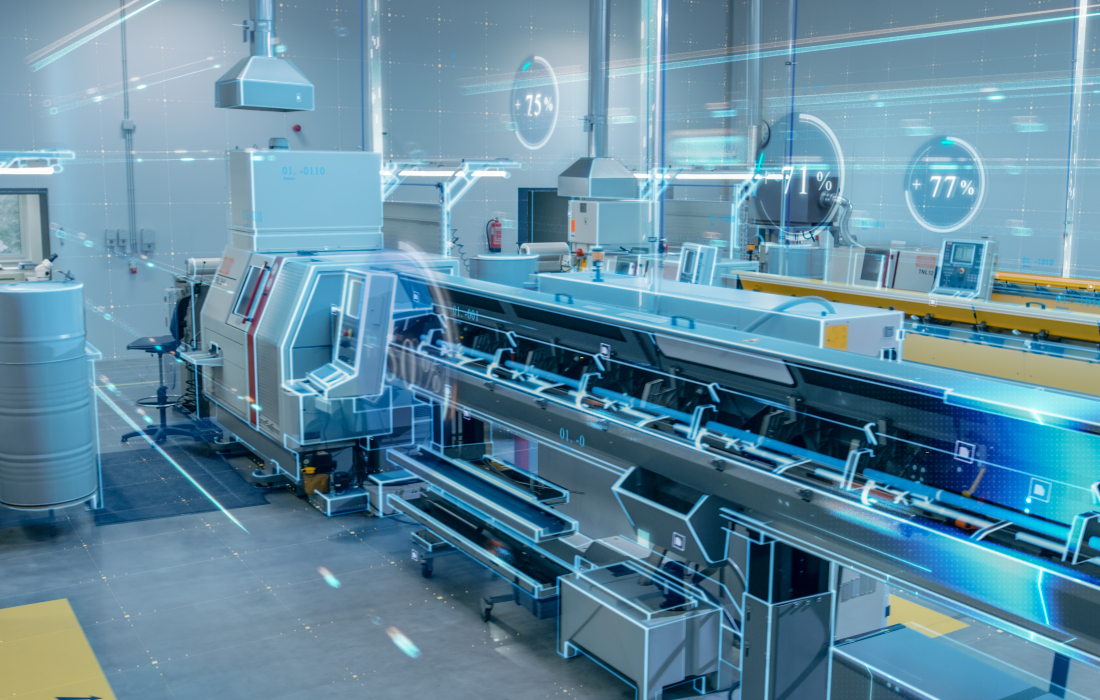Table of Contents
Why Cloud Manufacturing Value Today
Manufacturing stands at a unique crossroads. When businesses struggle to manage complicated supply chains, uncertain consumer demand, and increasing economic pressures, the need for flexible and scalable solutions grows. Being able to swiftly shift the focus of production, control equipment, and work across multiple locations is not an option on a “wish list” item but an operational requirement. This is the place where cloud-based manufacturing software has made its most impact.
More companies are beginning to recognize the strategic benefits of cloud-based solutions for effectiveness, risk reduction, and future-proofing. The digital revolution is shaping the “factories of the future,” leading companies to rethink about rethinking their fundamental procedures. Cloud infrastructure can facilitate industry transformation by ensuring a smoother flow of data and better operational visibility. As the systems develop, manufacturing companies benefit from advantages such as increased accuracy in inventory and quicker response to market changes.
The Benefits of Cloud-Based Manufacturing
Cloud platforms provide operational benefits that help bridge the gap between traditional methods and the latest efficiency. Remote accessibility allows users to view production records in real-time and allows for immediate troubleshooting as well as proactive resource management. It helps reduce bottlenecks, spot production issues, and allows for seamless collaboration across all regions. Staff and managers have access to dashboards and analytics tools from any place, monitoring the health of equipment and performance indicators. Cloud storage can cut down on the major IT expenses, like maintenance of servers, upgrades to hardware, as well as energy consumption, and also provides predictable pricing for subscriptions.
Cloud storage systems can be deployed faster as companies expand to new manufacturing facilities or lines, removing the requirement for installation on-site or long training sessions. Real-time analytics and reporting allow operators to respond quickly to real-time trends, for example, cutting down on waste materials or enhancing shift scheduling. Cloud systems’ flexibility allows integration with new technologies like AI-driven forecasting algorithms as well as IoT sensors, encouraging constant improvements. Cloud-enabled businesses have already outperformed their counterparts and have seen tangible improvements in productivity and flexibility of the supply chain.
Addressing Common Challenges In Digital Adoption
Despite the promise of benefits that cloud computing promises, the digital leap into cloud manufacturing isn’t without its challenges. A major and frequently mentioned issue is compatibility with older equipment. These older machines weren’t designed to work in a cloud-connected environment, and the software was not designed to function in a cloud-connected setting. The limitations of the past can hinder digital adoption, which requires modifications to the interface or customized middleware. Another major issue is the change in organizational structure. New tools and processes can cause uncertainty or even apprehension within the staff, which is why it is essential to communicate with staff proactively.
Successful manufacturers transform the digital revolution into a collective initiative by engaging employees from the beginning and providing clear training programs. Beginning with a small test project within one department, businesses are able to demonstrate early successes and gather feedback that is actionable, and increase confidence before implementing more substantial modifications. Community-driven strategies reduce resistance and transform digital transformation into more of a collaborative process than a directive from the top.
Steps to Prepare Your Factory for the Cloud
Moving to the cloud does not require a complete overhaul. A successful digital transformation requires a planned, sequential method. First, you must begin by evaluating the digital capabilities, which involves assessing the existing IT infrastructure. It also involves identifying the machinery that is compatible with cloud platforms and bringing together business executives along with technical experts. The most problematic areas, such as frequent equipment breakdowns, frequent stockouts, or data silos, are identified in order to prioritize cloud-based solutions.
Next, you must evaluate the digital capabilities of your organization by examining existing equipment security, network stability, along IT-related support systems. Teams of cross-functionality are formed to discover the processes that are slowing productivity, which could be targeted for small-scale projects and rapid improvements. The appropriate platform is selected following the requirements, size, and security. Continuous training is designed for every level of organization. The process-oriented approach improves the probability of sustained success and helps ensure specific, quantifiable digital transformation initiatives.
Data Security and Compliance in Cloud Manufacturing
In a cloud-based environment, security and privacy of data from industrial sources are essential, particularly since threat actors are getting more sophisticated. Cloud platforms today take care of these issues by implementing multilayered security measures that include robust encryption protocols, precise access controls, as well as automated threat detection. All of these are crucial features. For those in the industry who are regulated and subject to international standards such as ISO/IEC 27001 or regional privacy laws is a must.
The IT team and the compliance department have to work together throughout the digital transformation process, from preparing through migration to regular operations. Regular security audits, employee education programs, and strong incident response strategies reduce the risk while ensuring that the sensitive data of customers and production remains protected at all times.
The Future of Cloud and Smart Factories
The road ahead is moving towards a future where smart factories are becoming the norm. In these hyper-connected settings, cloud platforms act in the role of a digital backbone connecting inventory, machines, production schedules, production plans, and even feedback from customers in real-time. As AI machines, machine learning and IoT technology enable factories to identify and prevent failures of machines as well as tailor products for individual customers, and provide goods at a speed that is unmatched and with precision.
Manufacturing experts believe that the early adopters of Industry Week’s systems for talent are already seeing significant gains. Based on Industry Week’s research on the cloud’s power for manufacturing, companies are more resilient to supply chain challenges, offer superior sustainable performance, and offer better opportunities for their employees. The cloud basically levels all playing fields for firms of any size and opens up an abundance of opportunities for growth and innovation.





